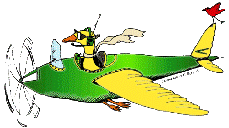Bird Strike Committee Proceedings
Date of this Version
October 2002
Document Type
Article
Abstract
Land use changes around aerodromes are becoming more problematical as conservation groups increasingly press for eco-friendly restorations, especially of water areas. Often the requirement is to encourage insects or plants or recreational use of such areas. However, these same beneficial features for biodiversity, can enhance the already considerable off-airfield bird attraction. A single case study illustrates the slow, generally unnoticed, development of a small water feature as an attraction to increasing numbers of birds and species over a period of about 10 years. This and a second study reveal how a "must feed the birds" mentality influences local bird populations. The extra food provided attracts even more birds that in turn attract more feeders; together, they increase the potential bird strike risk on the nearby aerodrome. Urbanization is increasing around aerodromes and balancing ponds for new business parks are not deep, functional holding tanks but made into ornamental water features. Here gently sloping lawns allow both staff and visitors easy access to feed the birds. By comparison, landfill sites are now relatively simple areas to control because the general public does not have access. Even when legislation exists to stop the deliberate feeding of birds, resistance groups form to oppose it and they employ direct action. This paper reviews one such site, the problems created and the law-breaking individuals with an attitude contrasting with common sense and logic. A major difficulty is that efficient airfield bird management appears to "handle" any problem from many of these sites by ensuring that the airfield is not a safe haven for birds visiting them. As such, it is difficult to convince the developers of new water features and the bird feeders that their actions may increase the flight safety risk. A simple population model is discussed and two case studies presented.


